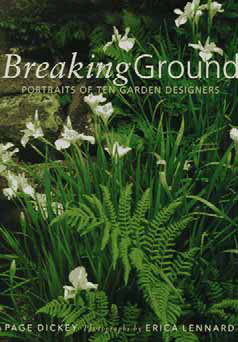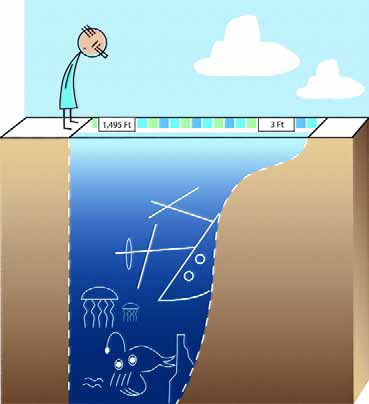ARTICLES
Advance Search
Aquatic Health
Aquatic Health, Fitness & Safety
Around the Internet
Aquatic Culture
Aquatic Technology
Artful Endeavors
Celebrity Corner
Life Aquatic
Must-See Watershapes
People with Cameras
Watershapes in the Headlines
Art/Architectural History
Book & Media Reviews
Commentaries, Interviews & Profiles
Concrete Science
Environment
Fountains
Geotechnical
Join the Dialogue
Landscape, Plants, Hardscape & Decks
Lighter Side
Ripples
Test Your Knowledge
The Aquatic Quiz
Other Waterfeatures (from birdbaths to lakes)
Outdoor Living, Fire Features, Amenities & Lighting
Plants
Ponds, Streams & Waterfalls
Pools & Spas
Professional Watershaping
Structures (Editor's Notes)
Travelogues & History
Water Chemistry
WaterShapes TV
WaterShapes World Blog
Web Links
Around the Internet
Aquatic Culture
Aquatic Technology
Artful Endeavors
Celebrity Corner
Life Aquatic
Must-See Watershapes
People with Cameras
Watershapes in the Headlines
It's no exaggeration to say that landscape design, whether residential or commercial, is in something of a rut these days. Nor is it saying anything new. Even in settings separated by great distance - a planned community in Plano, Texas, for example, compared to one in Toms River, N.J. - you'll find almost the exact same hardscape and planting treatments. There's just an incredible homogeneity in design these days. If you find yourself depressed by that predictability (or are stuck in those creative doldrums yourself), I strongly recommend picking up a copy of Breaking Ground: Portraits of Ten Garden Designers (Artisan, a division of Workman Publishing, 1997). Written by Page Dickey, this heavily illustrated 208-page text treats us to insightful and intimate looks at a set of extraordinarily diverse
A big part of properly designing watershapes to meet specific client needs has to do with understanding how they'll be using the body of water. I always explore this issue with my clients, which is why, for the most part, I don't do many pools with traditional deep ends - despite the fact that, for decades, most pools have been built with them. To me, in fact, the whole concept of deep water in residential swimming pools is basically misguided and largely obsolete. Consider exactly what it is that bathers can do in the deep end of a pool: They might dive, tread water or swim to the bottom to retrieve coins or pool toys - and, unfortunately, they can drown there, too. Yes, people also drown in shallow water, but there's no doubt that deeper waters provide
A big part of properly designing watershapes to meet specific client needs has to do with understanding how they'll be using the body of water. I always explore this issue with my clients, which is why, for the most part, I don't do many pools with traditional deep ends - despite the fact that, for decades, most pools have been built with them. To me, in fact, the whole concept of deep water in residential swimming pools is basically misguided and largely obsolete. Consider exactly what it is that bathers can do in the deep end of a pool: They might dive, tread water or swim to the bottom to retrieve coins or pool toys - and, unfortunately, they can drown there, too. Yes, people also drown in shallow water, but there's no doubt that deeper waters provide
Although we think of them together as activities in the world of exterior design, watershaping and landscaping have some significant distinctions. The watershapers who design and build pools, spas, fountains and waterfeatures, for instance, fully intend them to be structurally static and unchanging (a firm hope, anyway, especially in earthquake country) once they are completed. By contrast, the landscape professionals who design and install the gardens, trees and plants that may surround a watershape work with dynamic, constantly changing materials. What this means is that perfection is a much more elusive quality for landscape professionals by comparison to watershapers. Indeed, for us on the green side, achieving the kind of perfection one often
Although we think of them together as activities in the world of exterior design, watershaping and landscaping have some significant distinctions. The watershapers who design and build pools, spas, fountains and waterfeatures, for instance, fully intend them to be structurally static and unchanging (a firm hope, anyway, especially in earthquake country) once they are completed. By contrast, the landscape professionals who design and install the gardens, trees and plants that may surround a watershape work with dynamic, constantly changing materials. What this means is that perfection is a much more elusive quality for landscape professionals by comparison to watershapers. Indeed, for us on the green side, achieving the kind of perfection one often
Even though I've been on the leading edge of a movement for several years now, it still feels strange to put this thought on paper: A growing number of professionals like me are now finding work as consultants in the design and construction of watershapes. Who would ever have thought it possible? Just a few short years ago, the idea that anyone could make a living by charging for designs or construction oversight was outlandish and the subject of skepticism, shock and derision among architects, landscape architects and pool contractors. To that point, after all, "pool design" was generally a service that existed almost exclusively to support the sales efforts of contractors. These folks, who were accustomed to
Even though I've been on the leading edge of a movement for several years now, it still feels strange to put this thought on paper: A growing number of professionals like me are now finding work as consultants in the design and construction of watershapes. Who would ever have thought it possible? Just a few short years ago, the idea that anyone could make a living by charging for designs or construction oversight was outlandish and the subject of skepticism, shock and derision among architects, landscape architects and pool contractors. To that point, after all, "pool design" was generally a service that existed almost exclusively to support the sales efforts of contractors. These folks, who were accustomed to
As I was graduating from college many years ago, one of my professors predicted that more than 30 percent of us would eventually hold jobs that hadn't been invented yet. With the emergence of the Internet and other mass-communication technologies in recent years, I'd be hard pressed to think he was anything but conservative with his forecast. It's exciting to think we live at a time when new vocations are constantly emerging to provide us with ever-broadening sets of employment options. And it's exciting to point out that one of these new professions
As I was graduating from college many years ago, one of my professors predicted that more than 30 percent of us would eventually hold jobs that hadn't been invented yet. With the emergence of the Internet and other mass-communication technologies in recent years, I'd be hard pressed to think he was anything but conservative with his forecast. It's exciting to think we live at a time when new vocations are constantly emerging to provide us with ever-broadening sets of employment options. And it's exciting to point out that one of these new professions
In Costa Rica, the people have a saying, pura vida, which in English roughly translates to "pure life." We also are known to say, cual es el apuro, which means, "What's the hurry?" Those two unofficial national slogans reflect the essence of life in this country, where relaxation, an appreciation of natural beauty, love of family and a peaceful spirit are defining characteristics for the society. But even in a place like Costa Rica, where the pace of life is slow, relaxed and easy, timing is still everything. About three years ago, it occurred to me that a variety of social and economic factors were creating a watershape market in Costa Rica in which a truly high-end, quality-oriented custom company could become quite successful. Those factors - Costa Rica's rising profile as


















